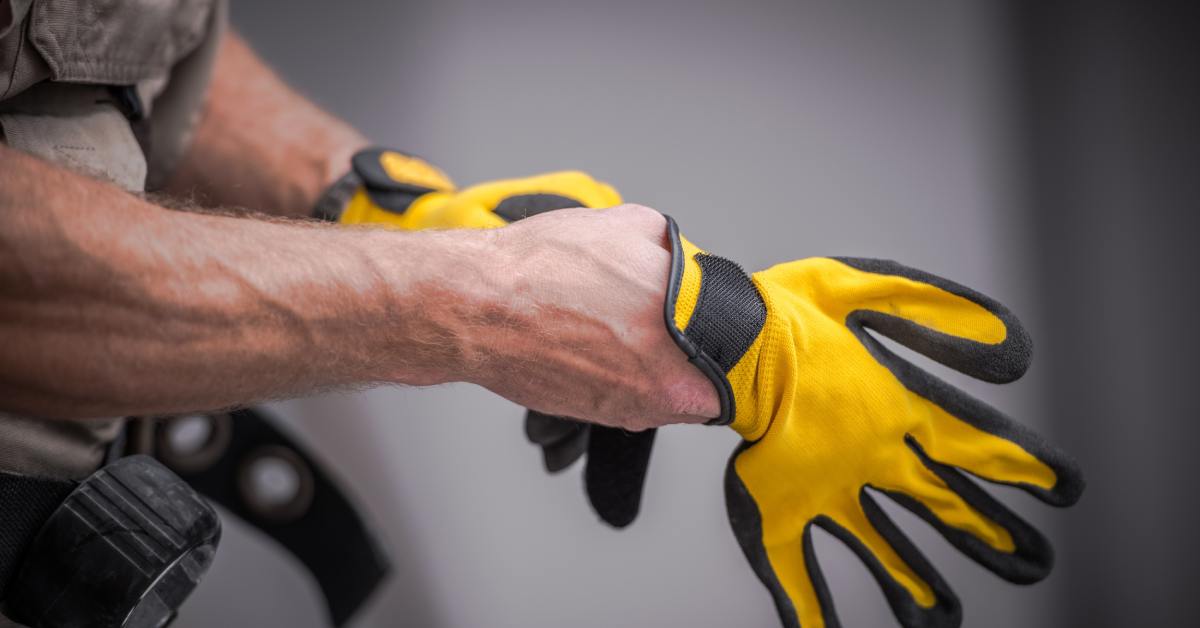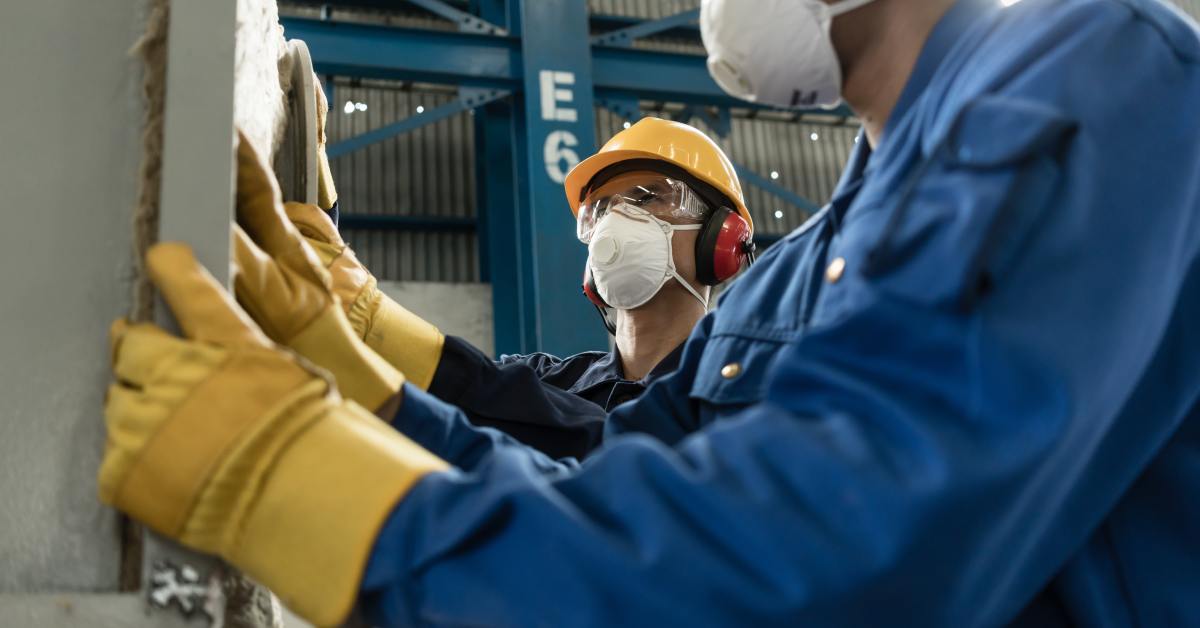How To Choose the Right Safety Gloves for Your Needs

When it comes to ensuring workplace safety, you can’t overstate the importance of high-quality safety gloves. The right pair protects your hands from potential hazards and enhances your ability to perform tasks effectively. But with so many options available, selecting the ideal safety gloves might seem overwhelming. This guide on how to choose the right safety gloves for your needs can help!
Pinpoint the Hazards in Your Workplace
The first step is to identify the specific risks you encounter in your work environment. For instance, if you’re in construction, you face hazards like sharp tools, heavy machinery, and rough surfaces. Cut-resistant gloves with reinforced protection are a smart choice for staying safe when handling sharp edges.
On the other hand, environments with extreme temperatures demand specialized insulated gloves to keep your hands safe from burns or frostbite. If your role involves chemical exposure, gloves with high chemical resistance are crucial. These gloves shield your hands from harmful substances like solvents, oils, or acids. Overall, pinpointing these risks ensures that the gloves you select will handle the demands of your job.
Understand the Different Types of Safety Gloves
To select the right protective work gloves, you must know their types and intended uses. Whether you’re working on a construction site or in an industrial setting, the gloves should align with the specific hazards you face. We touched on hazard-specific design above, and we go into more detail below.
Cold-Resistant Gloves for Harsh Conditions
If your job requires working in cold climates or freezer environments, you need cold-resistant gloves. These gloves keep your hands warm while offering protection from the elements.
Cold-resistant gloves feature a combination of insulated materials and water-resistant coatings. These characteristics ensure that you maintain dexterity while safeguarding against frostbite or loss of grip in snowy or icy conditions. The gloves might feature textured palms for added traction when handling steel or other slippery materials outdoors.
Cut-Resistant Gloves for Sharp Environments
For jobs involving sharp tools, knives, or materials like glass and metal, cut-resistant gloves are essential. These gloves have materials like Kevlar or stainless steel mesh to protect your hands from lacerations. These gloves are especially useful in settings where you work with sheet metal, sharp-edged tools, or broken glass. Essentially, they allow you to handle sharp edges with confidence and precision.
Insulated Gloves for High Temperatures
If you handle heated materials or welding equipment or simply need protection against high heat, insulated gloves should top your list. Consider gloves with heat-resistant properties, like those that feature aramid fibers. These gloves offer essential thermal resistance and can reduce the risk of burns or other injuries caused by high temperatures. Many also include long cuffs to protect your arms, which is particularly helpful when dealing with welding sparks.

Specialized Safety Gloves for Unique Tasks
Beyond the primary categories, additional glove types exist. For handling hazardous chemicals or working in environments with frequent exposure to liquids, chemical-resistant gloves are indispensable. These gloves provide excellent protection against solvents, oils, and a wide variety of other hazardous substances.
If your job involves operating heavy machinery or power tools, impact-resistant gloves offer the extra protection necessary to guard against sudden heavy impacts.
If hygiene or product contamination is a concern, disposable gloves come in handy. They feature nitrile, latex, or vinyl. They’re safe for food handling, healthcare, or light-duty tasks.
For work that involves constant tool use, anti-vibration gloves reduce the risk of hand fatigue and vibration-related injuries. These suit construction roles, road work, and additional jobs requiring the use of jackhammers or drills.
Evaluate the Essential Glove Features
Beyond choosing gloves with the hazard-appropriate material and construction, certain other features are universally useful. For one, grip is essential when handling tools, objects, or machinery. Gloves with textured surfaces or reinforced palms improve control, preventing objects from slipping from your hands. You should also look for features like adjustable closures, breathable linings, and ergonomic designs to improve comfort and wearability.
Confirm Compliance With Safety Standards
You can choose the right safety gloves for your needs based on your industry’s safety standards. These standards provide clear benchmarks for a glove’s ability to handle different hazards. ANSI ratings serve as the most reliable framework for evaluating glove performance.
Understanding ANSI Ratings
The American National Standards Institute (ANSI) assigns ratings to gloves based on their ability to resist specific risks, such as cuts. The ANSI cut level rating measures the weight in grams needed to slice through the glove material. Ranging from A1 to A9, here’s a look at the scale:
- A1 resists minimal hazards like paper cuts or light handling tasks.
- A5 offers solid protection for moderate dangers, such as glass handling or tool use.
- A9 handles extreme threats like sharp machinery or heavy-duty sheet metal work.
Examples of Industries and Relevant ANSI Ratings
Food processing requires ANSI cut levels A1 to A3 for light cuts while preserving dexterity. For construction, ANSI cut levels A4 to A5 guard against jagged edges, glass, and tool vibrations, with abrasion resistance critical for tasks like demolition. Manufacturing demands ANSI cut levels A5 to A7 for handling sharp machinery components and high-friction tasks safely. Oil and gas workers require A6 or higher, along with grip and impact resistance, to handle pipes and heavy tools effectively. Metal fabrication relies on ANSI Cut Levels A7 to A9 to protect against sharp sheets and equipment, with heat-resistant features essential for welding.
Recognizing these ratings ensures gloves meet safety and performance needs in your field.

Test Gloves for Fit and Comfort
Lastly, ensure the gloves you choose fit properly and feel comfortable during use. Ill-fitting gloves either slip off or restrict your movements, neither of which contributes to safety or productivity.
Spend time testing gloves before making a decision. Confirm that the gloves allow enough freedom of movement and tactile sensitivity to handle your regular activities. Look for designs with adjustable features or various size options to accommodate your hand shape without compromising dexterity.
Focus on comfort factors that boost endurance and efficiency. Gloves with breathable linings prevent overheating during long jobs. Reinforced materials in high-wear areas increase durability without adding bulk or weight. Lightweight options improve precision for delicate tasks and reduce the risk of hand fatigue.
Once you find gloves that align with your needs and feel right, you can expect noticeable improvements in both safety and performance. Ultimately, comfortable gloves don’t just protect you; they also keep you focused on the job at hand.

Recent Comments